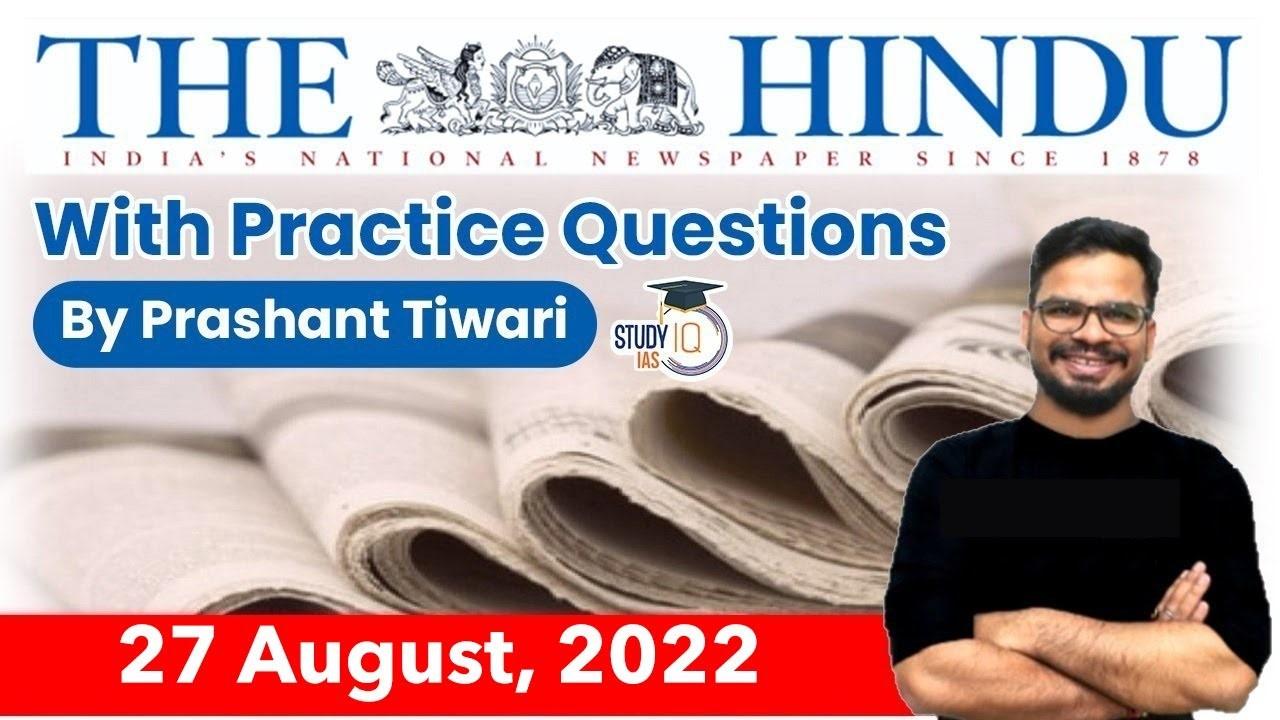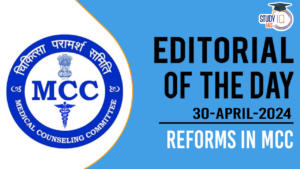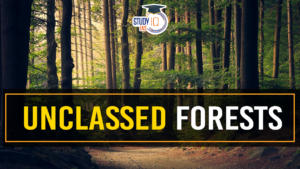Table of Contents
SC raises Karnataka iron ore mining ceiling limit

- ‘Ecology conservation must go hand-in-hand with development’
- The Supreme Court on Friday raised the ceiling limit of iron ore mining for Ballari, Chitradurga, and Tumakuru districts in Karnataka, saying conservation of the ecology and environment must go hand-in-hand with the spirit of economic development.
- The apex court raised the ceiling limit of iron ore mining from 28 MMT to 35 MMT for Ballari district, and from 7 MMT to 15 MMT for Chitradurga and Tumakuru districts.
Iron Ore
-
- It is a metal of universal use, and backbone of modern civilization
- Iron is taken out in form of ore, and different types of ore contains varying proportion of iron
- Haematite: this has around 70% of metallic content
- Found in Dharwad and Cuddapah rock systems of peninsular India
- Most of it is found in states of Odisha, Jharkhand, Chhattisgarh and Andhra Pradesh
- In western section, major concentration is in Karnataka, Maharashtra and Goa
- Magnetite
- Second best ore, with metallic content varying from 60-70%
- These have magnetic quality, and occur in Dharwad and Cuddapah systems
- Most reserves are found in Karnataka, Andhra Pradesh, Rajasthan, Tamilnadu and Kerala
- Haematite: this has around 70% of metallic content
-
-
- Limonite
- These are inferior ores, which contain 40-60% iron metal
- These are found in Raniganj coal field, Garhal in Uttarakhand, Mirzapur in Uttar Pradesh and Kangra valley of Himachal Pradesh
- Siderite
- These contain concentration less than 40%
- It contains many impurities and hence mining not economically viable
- Reserves
- Haematite and Magnetite are two most important iron ores in India
- About 97% of magnetite ore resources are located in four states of Karnataka(73%), Andhra Pradesh(14%), Rajasthan(5%) and Tamilnadu(4.9%)
- Major source of Haematite are located in Odisha, Jharkhand, Chhatisgarh
- Production and distribution
- The major iron ore belts in India are listed below:
- Odisha-Jharkhand belt
- Durg-Bastar-Chandrapur belt in Chattisgarh
- Ballari-Chitradurga-Chikkamagaluru-Tumakuru belt in Karnataka
- Maharashtra-Goa belt
- Limonite
-
A draconian law that needs to disappear

- The north-east needs to be freed from the net of AFSPA, as it has subsumed constitutional rights with impunity.
- Armed Forces (Special Powers) Act 1958, or AFSPA, completely from the region — this follows its partial withdrawal from parts of Assam, Nagaland, Arunachal Pradesh and Manipur in March this year — could spell tidings for the denizens of these States.
- The genesis of the law can be traced to the Armed Forces (Special Powers) Ordinance 1942 which was enacted by the British to subjugate the rebels in the country during the Quit India movement, particularly in Assam and Bengal in October 1942. The law continues to be enforced in its new format as the Armed Forces (Special Powers) Act 1958.
- The British colonial government had on 15th August, 1942, promulgated the Armed Forces Special Powers Ordinance to suppress the Quit India movement.
- It was the foundation for four ordinances, including one for the “Assam disturbed areas” invoked in 1947 to deal with Partition-induced internal security challenges.
- The Armed Forces (Assam and Manipur) Special Powers Act, 1958, followed the Assam Disturbed Areas Act of 1955 to deal with the uprising in the Naga Hills and adjoining areas.
- The Act was replaced by the AFSPA for wider application. A similar Act specific to Jammu and Kashmir was enacted in 1990.
- AFSPA gives sweeping powers to the armed forces.
- For example, it allows them to open fire, even causing death, against any person in contravention to the law or carrying arms and ammunition.
- Also, it gives them powers to arrest individuals without warrants, on the basis of “reasonable suspicion”, and search premises without warrants.
- It can be imposed by the Centre or the Governor of a state, on the state or parts of it, after these areas are declared “disturbed’’ under Section 3.
- The Act was amended in 1972 and the powers to declare an area as “disturbed” were conferred concurrently upon the Central government along with the States.
- Currently, the Union Home Ministry issues periodic “disturbed area” notification to extend AFSPA only for Nagaland and Arunachal Pradesh.
- The notification for Manipur and Assam is issued by the State governments.
- Tripura revoked the Act in 2015 and Meghalaya was under AFSPA for 27 years, until it was revoked by the MHA from 1st April 2018.
Puttaswamy and the fading promise of a right-

- Five years after the crucial judgment on the right to privacy, the ground reality is an eye-opener
- August 24 has passed, marking five years since a nine-judge Bench of the Supreme Court of India delivered a crucial judgment in the case of Justice K.S. Puttaswamy (retd.) vs Union of India (2017).
- The judgment delivered on that date formally recognised the right to privacy as being a fundamental right stemming from the right to life and personal liberty, guaranteed under Article 21 of the Indian Constitution.
- Data security breaches which result in the loss and theft of personal, sensitive data have not reduced in terms of measurable frequency or their impact.
- Even worse, as of today, any person or business within and outside India is still in a position where, for a slight bargain, they can procure the personal information for a vast majority of the people, categorised and labelled neatly wherever possible, for use and consumption.
Murder in the sewer

- All human lives are precious, but, in practice, some are seen as less precious than others.
- Despite the efforts of courts and governments, law and enforcement have been unable to keep a certain category of workers out of harm’s way: those who are engaged in sewage cleaning.
- While the job itself is dangerous, as several other human pursuits are, sewage cleaning involves working with human excreta, and cannot be seen without invoking the concept of dignity of labour.
Government Measures to Tackle Manual Scavenging
- Legislative
- The Employment of Manual Scavengers and Construction of Dry Latrines (Prohibition) Act 1993
- It set imprisonment of up to one year and a fine of Rs 2,000 for pushing a person to manual scavenging.
- Self Employment Scheme for Rehabilitation of Manual Scavengers (SRMS) 2017
- It is a successor scheme to the National Scheme for Liberation and Rehabilitation of Scavengers and their Dependents (NSLRS) with the objective to rehabilitate remaining manual scavengers and their dependents in alternative occupations, in a time-bound manner.
- Prohibition of Employment as Manual Scavengers and their Rehabilitation Act, 2013
- The Employment of Manual Scavengers and Construction of Dry Latrines (Prohibition) Act 1993
- The Act put an end to the practice of any form of manual cleaning, carrying, disposing or handling of human waste.
- The act says the National Commission for Safai Karamcharis (NCSK) would monitor implementation of the Act and enquire into complaints regarding contravention of the provisions of the Act.
- National Commission for Safai Karamcharis
- It was constituted on 12th August 1994 as a statutory body by an Act of Parliament viz. National Commission for Safai Karamcharis Act, 1993, for a period of three years i.e. up to 31st March 1997.
- However, the validity of the Act was extended up to March 2002 and then up to February 2004 vide Amendment Acts passed in 1997 and 2001 respectively.
- Recently, the National Human Rights Commission (NHRC) has made a series of recommendations to the Centre to eradicate manual scavenging and these are
- The Centre should provide Rs. 10 lakh loan to manual scavengers’ family members so that they can start some business activity.
- The National Crime Records Bureau (NCRB) should monitor the sewer deaths in its reports.
- The NHRC recommended expanding the definition of manual scavenging in order to cover other hazardous cleaning or enacting a new law for hazardous cleaning.
At least one Constitution Bench will function all-year: Justice Lalit

- CJI-designate promises clarity, transparency in listing of cases.
- Justice Lalit said a clear-cut mechanism would be in place to allow lawyers to mention urgent matters, which includes bail petitions, etc., before the respective Benches for early listing.
- A Constitution Bench is a special bench of the Supreme Court having 5 or more judges on it.
- These benches are not a common phenomenon. Constitution Benches are exceptions, set up only if ;
- The case involves a significant question of law pertaining to the interpretation of the Constitution [Article 145(3) of the Constitution, which mandates that such matters be heard by a bench of not less than five judges]
- Two or more benches of the Supreme Court have delivered conflicting judgments on the same point of law.
- The Constitution Benches are set up on an ad hoc basis and when the need arises.
- Constitution Bench is constituted in rare cases to decide important questions of fact or legal and/or constitutional interpretation.
- Article 130 says that the Supreme Court shall sit in Delhi or in such other place or places, as the Chief Justice of India may, with the approval of the President, from time to time, appoint.
Army speeds up procurement of light tank ‘Zorawar’ for LAC

- This project of Light Tanks has been named after Zorawar Singh Kahluria, who was a military general. He had served under Jammu’s Raja Gulab Singh, who according to officials is known as the ‘conqueror of Ladakh’.
- It has been designed in such a way that it will be able to operate in varying terrain from High Altitude Area, island territories as well as marginal terrain.
- The Army also wants the light tank to be amphibious, so it can be deployed across riverine regions and even the Pangong Tso Lake in Eastern Ladakh.
Achieving 2070 net-zero target could boost India’s GDP: report

- Achieving net zero carbon emissions by 2070, a target that Prime Minister Narendra Modi committed to in Glasgow in 2021, could boost India’s economy by 4.7% above the projected baseline growth in GDP terms by 2036, worth a total of $371 billion, said a report commissioned by the High-level Policy Commission on Getting Asia to Net Zero,which was released here on Friday.
- Net zero emissions by 2070 would require an economy-wide investment of $10.1 trillion from now; 2050 calls for $13.5 trillion, the research finds.
- Net zero emissions’ refers to achieving an overall balance between greenhouse gas emissions produced and greenhouse gas emissions taken out of the atmosphere.
Centre picks 75 tribal districts for TB intervention project

- After having run an active case-finding campaign to detect instances of Tuberculosis (TB) among tribal populations over the past six months, the Ministry of Tribal Affairs and the Central TB Division of the Ministry of Health and Family Welfare have now zeroed in on 75 tribal districts, where focused interventions will be run over the next few months with the aim to make them TB-free.
- Discussing the way forward, both the Health and Tribal Affairs ministries have decided on a three-pronged strategy to address the high incidence of TB in the selected 75 tribal districts, keeping with the government’s mission to make India TB-free by 2025, a government statement said.
- TB is caused by a bacterium called Mycobacterium tuberculosis, belonging to the Mycobacteriaceae family consisting of about 200 members.
- Some of Mycobacteria cause diseases like TB and Leprosy in humans and others infect a wide range of animals.
- In humans, TB most commonly affects the lungs (pulmonary TB), but it can also affect other organs (extra-pulmonary TB).
- TB is a very ancient disease and has been documented to have existed in Egypt as early as 3000 BC. TB is a treatable and curable disease.
- National Strategic Plan (NSP) for Tuberculosis Elimination (2017-2025), The Nikshay Ecosystem (National TB information system), Nikshay Poshan Yojana (NPY- financial support), TB Harega Desh Jeetega Campaign.
- Currently, two vaccines VPM (Vaccine Projekt Management) 1002 and MIP (Mycobacterium Indicus Pranii) have been developed and identified for TB, and are under Phase-3 clinical trial.
Vishnugadh project likely to face inquiry

An independent panel of the World Bank is considering a plea by residents of Haat village, Chamoli district, Uttarakhand to investigate environmental damage from the under-construction Vishnugad Pipalkoti Hydro Electric Project (VPHEP) in the district, according to documents reviewed by The Hindu.
The 444-MW VPHEP is being built by the Tehri Hydropower Development Corporation (THDC), a partially State-owned enterprise. The project is primarily funded by the World Bank and was sanctioned in 2011.
dam threatens the local Lakshmi Narayan Temple, which is deemed to be of historical and cultural importance by the Archaeological Survey of India (ASI).
Vishnugad Pipalkoti Hydro Electric Project to be developed by the THDC India Ltd (THDC) on the Alaknanda River in Uttarakhand.
China pledges support to Sri Lanka at UNHRC session –

- About:
- The Human Rights Council is an inter-governmental body within the United Nations system responsible for strengthening the promotion and protection of human rights around the world.
- Formation:
- The Council was created by the United Nations General Assembly in 2006. It replaced the former United Nations Commission on Human Rights.
- The Office of the High Commissioner for Human Rights (OHCHR) serves as the Secretariat of the Human Rights Council.
- OHCHR is headquartered in Geneva, Switzerland.
- Members:
- It is made up of 47 United Nations Member States which are elected by the UN General Assembly (UNGA).
- The UNGA takes into account the candidate States’ contribution to the promotion and protection of human rights, as well as their voluntary pledges and commitments in this regard.
- The Council’s Membership is based on equitable geographical distribution. Seats are distributed as follows:
- African States: 13 seats
- Asia-Pacific States: 13 seats
- Latin American and Caribbean States: 8 seats
- Western European and other States: 7 seats
- Eastern European States: 6 seats
- Members of the Council serve for a period of three years and are not eligible for immediate re-election after serving two consecutive terms.
- It is made up of 47 United Nations Member States which are elected by the UN General Assembly (UNGA).
Mains Practice Question:
Q.) Why is Universal Basic Insurance is better proposition than Universal Basic Income ? Explain. (150 words)
Q.) यूनिवर्सल बेसिक इन्शुरन्स यूनिवर्सल बेसिक इनकम से बेहतर प्रस्ताव क्यों है? समझाना। (150 शब्द)
Download Free PDF – Daily Hindu Editorial Analysis



 Current Affairs 30th April 2024 for UPSC...
Current Affairs 30th April 2024 for UPSC...
 Editorial of the day (30th Apr): Reforms...
Editorial of the day (30th Apr): Reforms...
 Unclassed Forests, State Expert Committe...
Unclassed Forests, State Expert Committe...

















